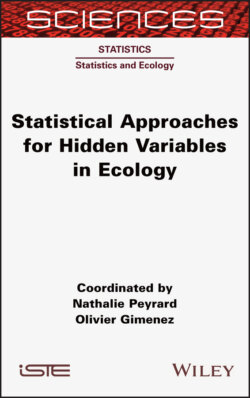Читать книгу Statistical Approaches for Hidden Variables in Ecology - Nathalie Peyrard - Страница 29
1.2.2.5. Inference
ОглавлениеUsing the model defined by [1.4], inference is used to fulfill two purposes:
– Estimation of activity: to determine the distribution of real activities given the observations, that is, for 0 ≤ t ≤ n, the distribution of the random variable Zt|Y0:n. For each time t, the estimated smoothing distribution gives the probability of being involved in each of the j activities.
– Estimation of parameters: the distribution ν0 and the transition matrix Π characterize the dynamic of activities, and the set of parameters {θj} 1 ≤ j ≤ J indicates the way in which the activity influences the distribution of observations.
In the case of unknown parameters, these two steps are carried out conjointly. Taking a frequentist approach, the EM algorithm may be used, as in section 1.2.1. Once again, it is easy to write an equation, analogous to [1.2], giving the full likelihood.
For this model, step E once again consists of calculating the quantity given by [1.4]. Again, the difficulty lies in calculating the smoothing distribution. Nevertheless, the discrete character of the hidden dynamic means that explicit calculation is possible. This is carried out iteratively using the forward–backward algorithm. The equations used in this simple and efficient algorithm can be found in Rabiner (1989).
Step M, in which the parameters are updated, is dependent on the nature of the emission distribution. In the Gaussian case, this step has an explicit expression; conversely, this is not the case when using a distribution such as von Mises.
Bayesian estimation may be applied by using Monte Carlo Markov Chain (MCMC) algorithms, which are found in programs such as Stan (Carpenter et al. 2017), Winbugs (Lunn et al. 2000) or NIMBLE (de Valpine et al. 2017).
